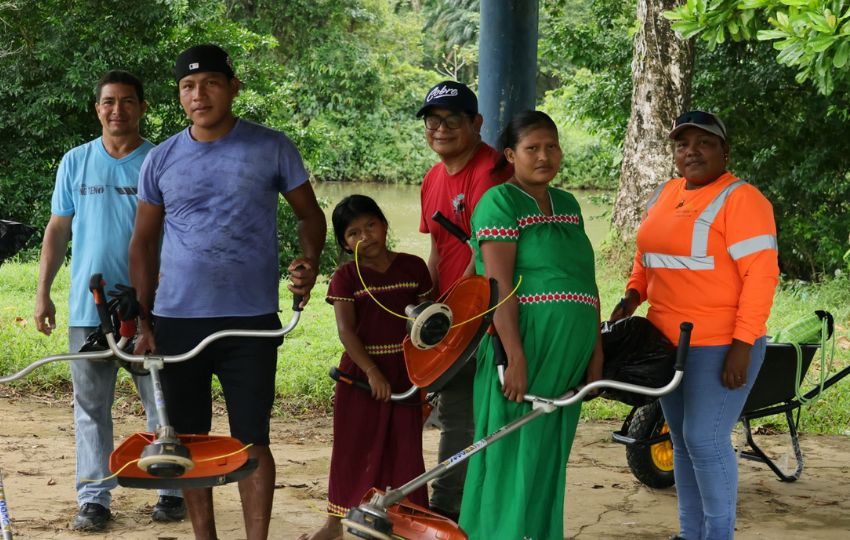HEALTH WATCH: Panamas history scarred by Malaria

WORLD Malaria Day on April 25 has special significance for Panama where the mosquito borne disease has played a big role in its history.

Malaria took thousands of lives during the building of the first trans-continental railway (1850-1855) and the thwarted French attempt at building the Panama Canal.
The arrival in Panama of US army surgeon Dr William Crawford Gorgas at the start of the American construction of the Canal, dramatically reduced the slaughter, and the methodology he used in controlling mosquitoes is still used in Panama and around the world.
The Gorgas Institute, and its attendant laboratories built in 1921 to honor his name, still plays an important role in combating tropical diseases.
But, in spite of continued massive efforts to end the disease, malaria continues to take its toll around the world, including Panama.
Our medical contributor Dr Cory Couillard writes:
Malaria affects and kills millions of people worldwide. In Africa, approximately one child will die every minute ranking malaria as one of the top 3 disease killers.
Throughout the world, 90 percent of all malaria deaths occur in pregnant women and children under the age of five. The World Malaria Report 2011 reported an estimated 655,000 people died in 2010.
Even when the disease doesn’t kill, it still can wreak havoc on overburdened communities, governing bodies and economies in malaria-endemic countries. Malaria often affects school and work attendance, decreases worker productivity and drains household resources as families struggle to pay for treatments.
In Africa, malaria deaths have been cut by one third in the last 10 years. Malaria was once found on every continent and in almost every country. 35 out of the 53 affected countries outside of Africa have reduced malaria cases by 50 percent in the same time period. Investments have created more than 90 countries malaria-free and another 26 nearly achieving a similar status.
Despite the improvements, significant concerns are upon the horizon. Financial support and control initiatives for malaria are now beginning to fade. Sadly, the global economic recession is tightening budgets of individuals, governments and NGOs. Once earmarked malaria dollars are now being spread out to help combat non-communicable, lifestyle-induced conditions such as heart disease, type 2 diabetes, obesity and cancer.
Non-communicable diseases (NCDs) have been referenced by sensational healthcare professionals as ‘diseases for dummies’. However untrue, the skyrocketing rates of these mainly personal choice, lifestyle-induced conditions are affecting the funding to non-lifestyle, communicable diseases such as malaria.
Essentially, high-risk, poverty-stricken pregnant women and children could be suffering from malaria further due to potentially unnecessary healthcare funding being distributed to the middle-to-upper classes for preventable NCDs. The negative health outcomes of poor choices of those with money are starting to cost more than the lack of choices of the world’s poorest.
To complicate the problem, drug-resistant strains of malaria are now surfacing in high-risk populations of the world as well. In 2012, researchers found that the most effective drugs are becoming less effective and over 20 percent of patients have begun to show treatment resistance.
Therefore now is the time for the malaria community to regroup, reenergize and look for new innovative ways to prevent the resurgence of malaria. Further investments and a strong defensive strategy must center on prevention and not just the treatment of malaria.
Prevention provides tools that enable families and employees to protect themselves against malaria and its effects. Such interventions may seem costly at first, but the long-term health and economic benefits far outweighs the cost of treatments.
As a basic guideline for protection against malaria, United Against Malaria recommends having at least two long-lasting insecticide-treated nets in a household. These nets will typically provide two to five years of protection for a family.
he level of protection is based on the size of the family, the type of net, the number of washings and the degree of care given.
Insecticides used in indoor residual spraying (IRS) are safe for humans but lethal to mosquitoes that land on walls within the structure. IRS has been shown to significantly decrease mosquito and larvae populations, especially in communities where stagnant water is present, such as those near mines, farms or brick-making operations.
Dr. Cory Couillard is an international healthcare speaker and columnist He works in collaboration with the World Health Organization's goals of disease prevention and global healthcare education. Views do not necessarily reflect endorsement.
Email: drcorycouillard@gmail.com





